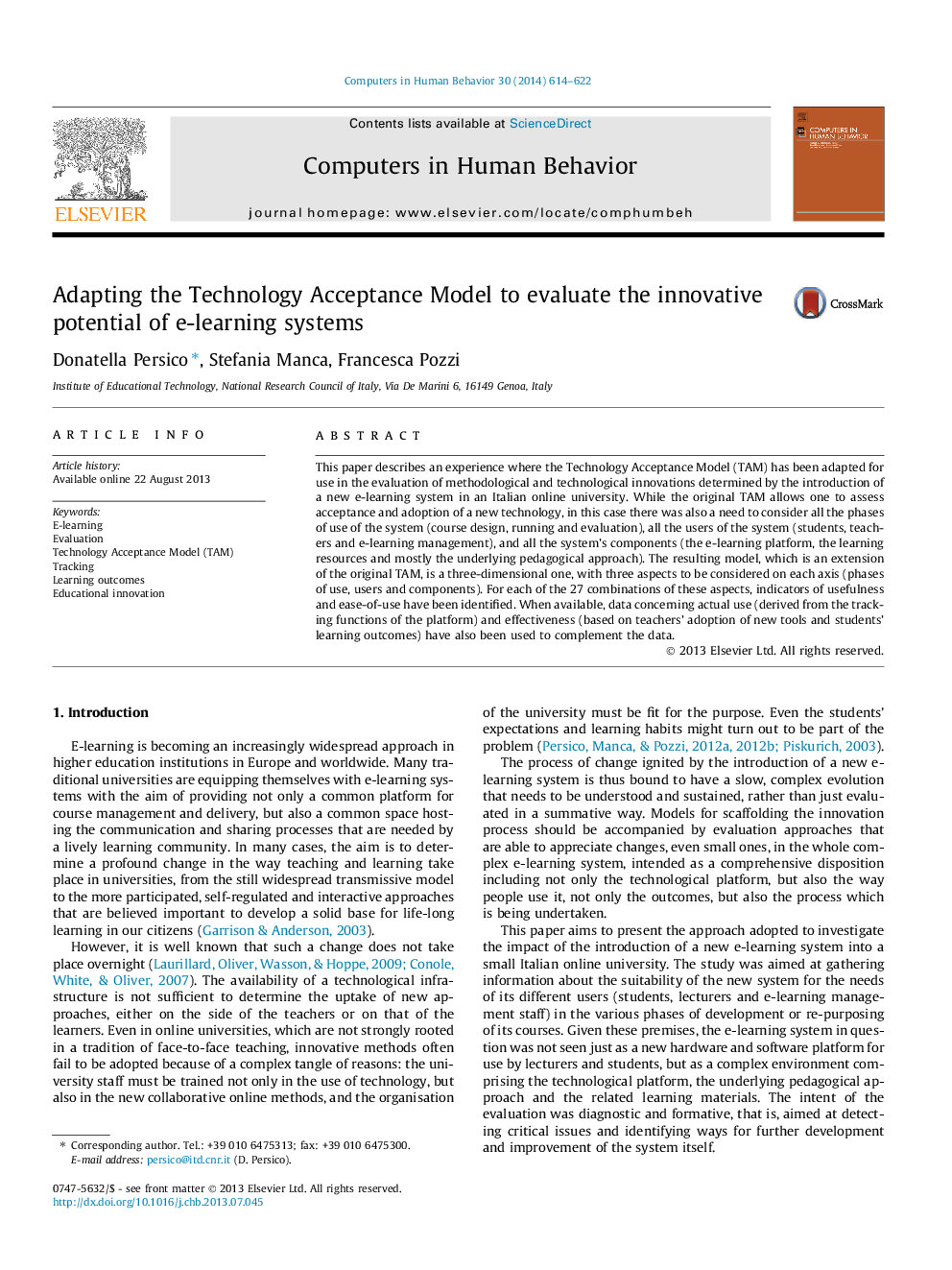| کد مقاله | کد نشریه | سال انتشار | مقاله انگلیسی | نسخه تمام متن |
|---|---|---|---|---|
| 350716 | 618455 | 2014 | 9 صفحه PDF | دانلود رایگان |

• A three dimensional model for the evaluation of e-learning systems is presented.
• Students, teachers, and e-learning managers should be involved in the evaluation.
• Platform, resources and approach are the e-learning system components to be assessed.
• Design, running and evaluation are the phases of the course lifecycle to be analyzed.
• Usefulness and ease of use should be complemented with data on use and effectiveness.
This paper describes an experience where the Technology Acceptance Model (TAM) has been adapted for use in the evaluation of methodological and technological innovations determined by the introduction of a new e-learning system in an Italian online university. While the original TAM allows one to assess acceptance and adoption of a new technology, in this case there was also a need to consider all the phases of use of the system (course design, running and evaluation), all the users of the system (students, teachers and e-learning management), and all the system’s components (the e-learning platform, the learning resources and mostly the underlying pedagogical approach). The resulting model, which is an extension of the original TAM, is a three-dimensional one, with three aspects to be considered on each axis (phases of use, users and components). For each of the 27 combinations of these aspects, indicators of usefulness and ease-of-use have been identified. When available, data concerning actual use (derived from the tracking functions of the platform) and effectiveness (based on teachers’ adoption of new tools and students’ learning outcomes) have also been used to complement the data.
Journal: Computers in Human Behavior - Volume 30, January 2014, Pages 614–622